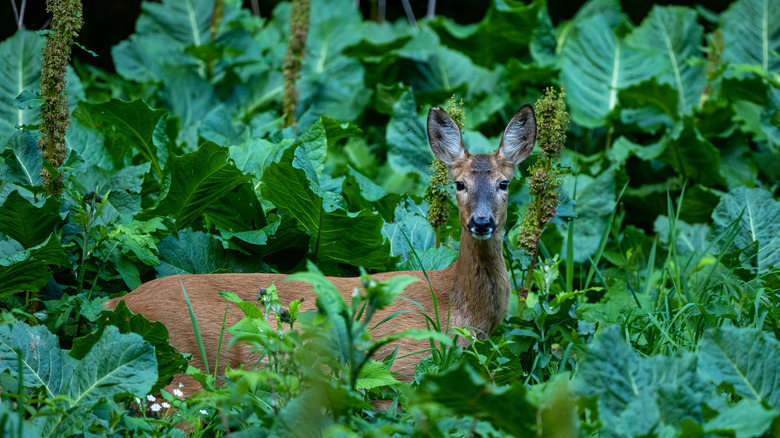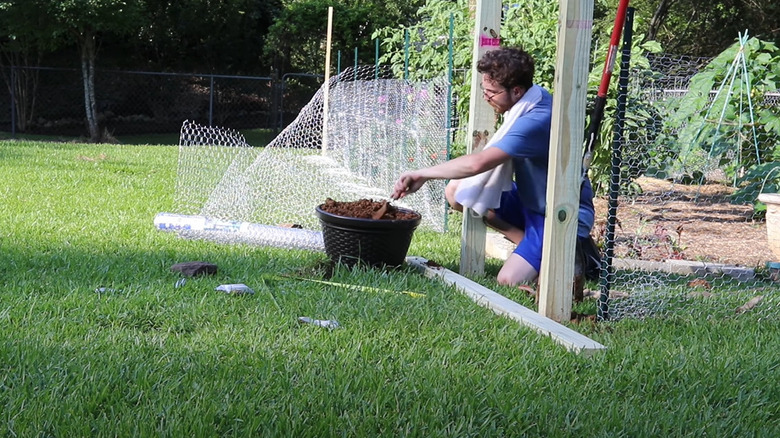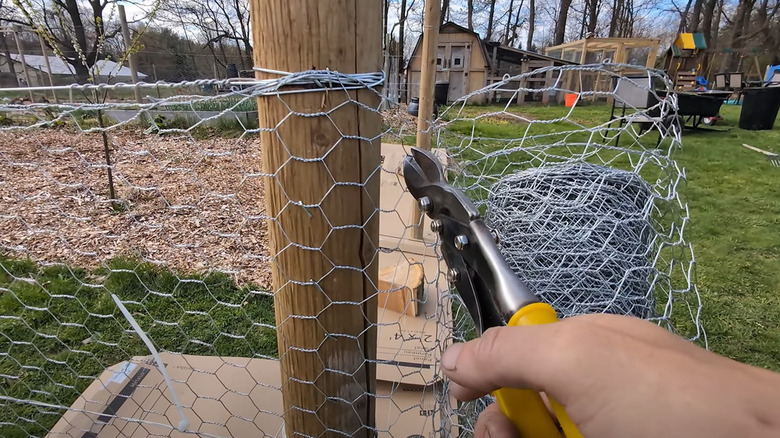Deter Deer From Destroying Your Garden With An Easy DIY Solution
Ah, that one morning you wake up to find your garden has turned into an all-you-can-eat buffet for the local deer population. Your precious plants didn't stand a chance. It's like those graceful forest critters see your hard work as nothing more than an invitation to a free feast. The good news is that keeping deer out of your garden doesn't need to be a mission impossible or drain your wallet. With a modest investment in chicken wire, which typically comes in at a few dollars per linear foot, you can safeguard your green space without losing your shirt or harming those invaders.
Chicken wire is enough to create a barrier that, psychologically and physically, deer just don't want to mess with. As for the best height for your deer fence? Too low, and the four-legged invaders hop right over. Too high, and you might spend a fortune. The sweet spot is generally 6 to 7-feet tall wire. Speaking of specifics, Fencer Wire 6 feet by 150 feet 20-gauge Poultry Netting will set you back $180 at Home Depot. That's plenty to cover a 30-foot by 40-foot garden. And don't forget about 4-inch by 4-inch by 8-feet timber posts, also found at Home Depot. You'll need them a bit taller than the wire to bury part into the ground for stability. In addition, a pack of 365 galvanized poultry net staples for about $8 bucks will come in handy.
How to build a DIY deer fence with chicken wire
The basic purchases for this DIY for a deer-free garden are wooden posts, chicken wire mesh, and staples. For a garden stretching 140 feet, spacing your posts about 10 feet apart means you'll need around 15 of them. Now, a piece of Severe Weather 4-inch by 4-inch by 8-feet Southern Yellow Pine Ground Contact Pressure Treated Lumber will set you back $11.28 at Lowe's. If the thought of digging holes manually makes you cringe, do yourself a favor and rent an auger.
Once you've got everything lined up, start the real work, kicking off by digging those holes 10 feet apart. Then, plant each post in the center, making sure it's arrow straight. Refill the hole with the soil you just dug up, tamping it down with every layer. Go step by step, making sure all the posts are in line. Next, wrap the chicken wire around the posts, securing it first with zip ties. Now, flex those muscles — pull the wire tight and use those staples to pin it down firmly to the posts. If you can handle a hammer or have a fencing stapler, now's the time to make it shine. The gate is calling next. Build and install an appropriately sized frame onto which you staple the same chicken wire. Once your DIY deer fence stands proud, do a final walkthrough. Trim any wire overhang, smooth out the jagged edges, and clip those temporary cable ties off.
Things to consider
Sure, lightweight chicken wire might save a bit of cash. However, it might not be your best long-term ally for deer deterrence. So, take a quick look at the wire mesh gauge beforehand. The smaller the gauge number (like 20 Ga versus 25 Ga), the beefier and better deer-resistant the wire. And if you're worried about rust, go for the galvanized steel wire mesh. Remember, deer are like escape artists; they'll find the tiniest gap and exploit it. So, pin that fence down to the earth with landscape staples or even bury it a couple of inches deep. About those motivated high jumpers, you could slap an outward-angled extension on top of your fence.
Ran into a bed of rocks when digging holes? Simply, secure the posts with concrete, so they stand firm. If you've got the 411 on the type of deer crashing your garden party, you could tailor the fence height accordingly. You should aim for at least 6.3 feet for red deer, about 5.10 feet for roe deer, and 4.11 feet for muntjac deer. To level up your DIY deer fence game, try stringing a white clothesline about 3 feet inside your fence line and around 4.5 feet off the ground. It messes with their depth perception and discourages them from attempting a jump-over. And for an extra touch, how about surrounding your garden with deer-resistant shrubs like boxwood, inkberry, juniper, and bayberry?


